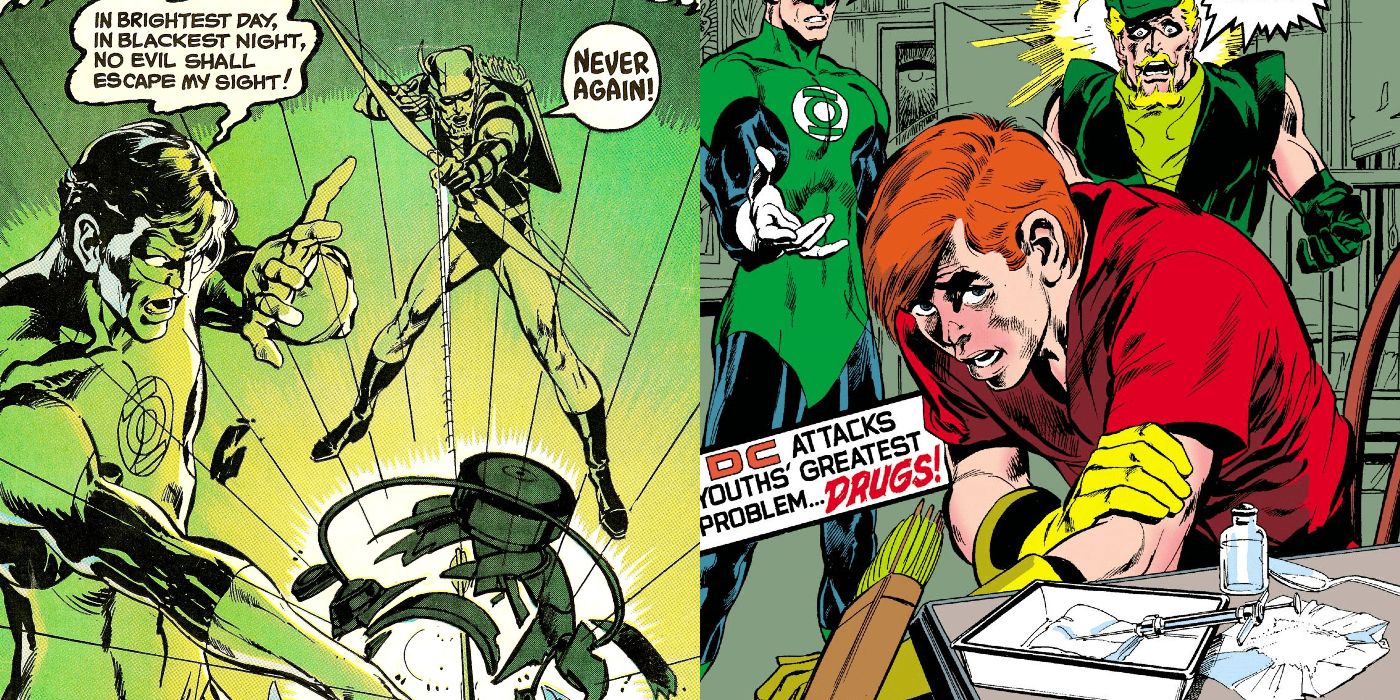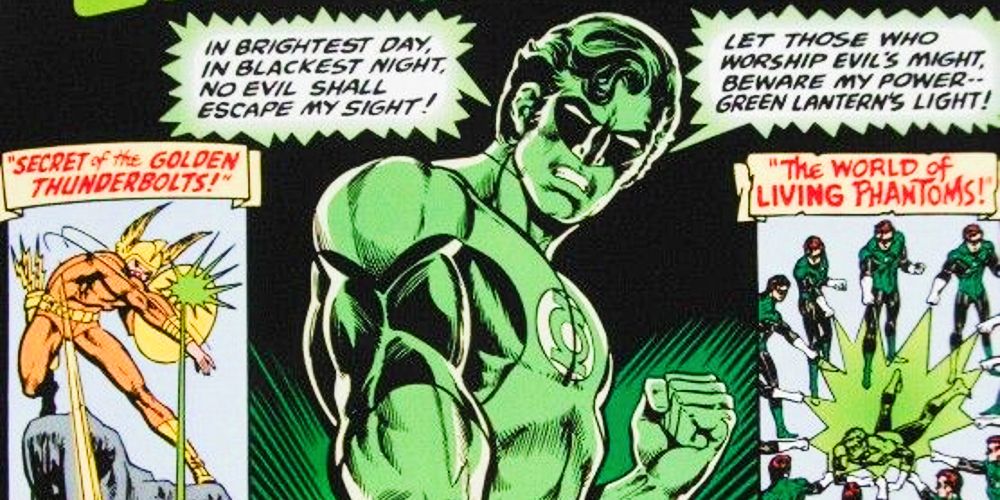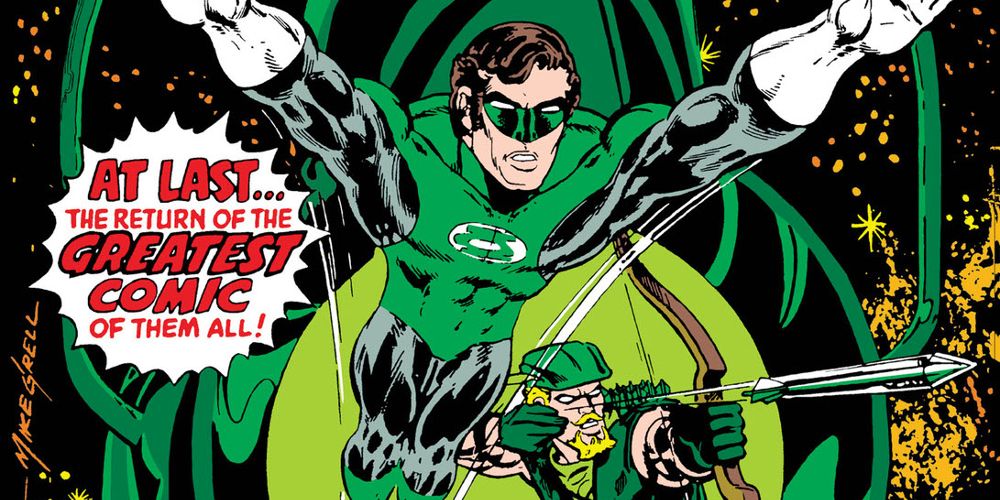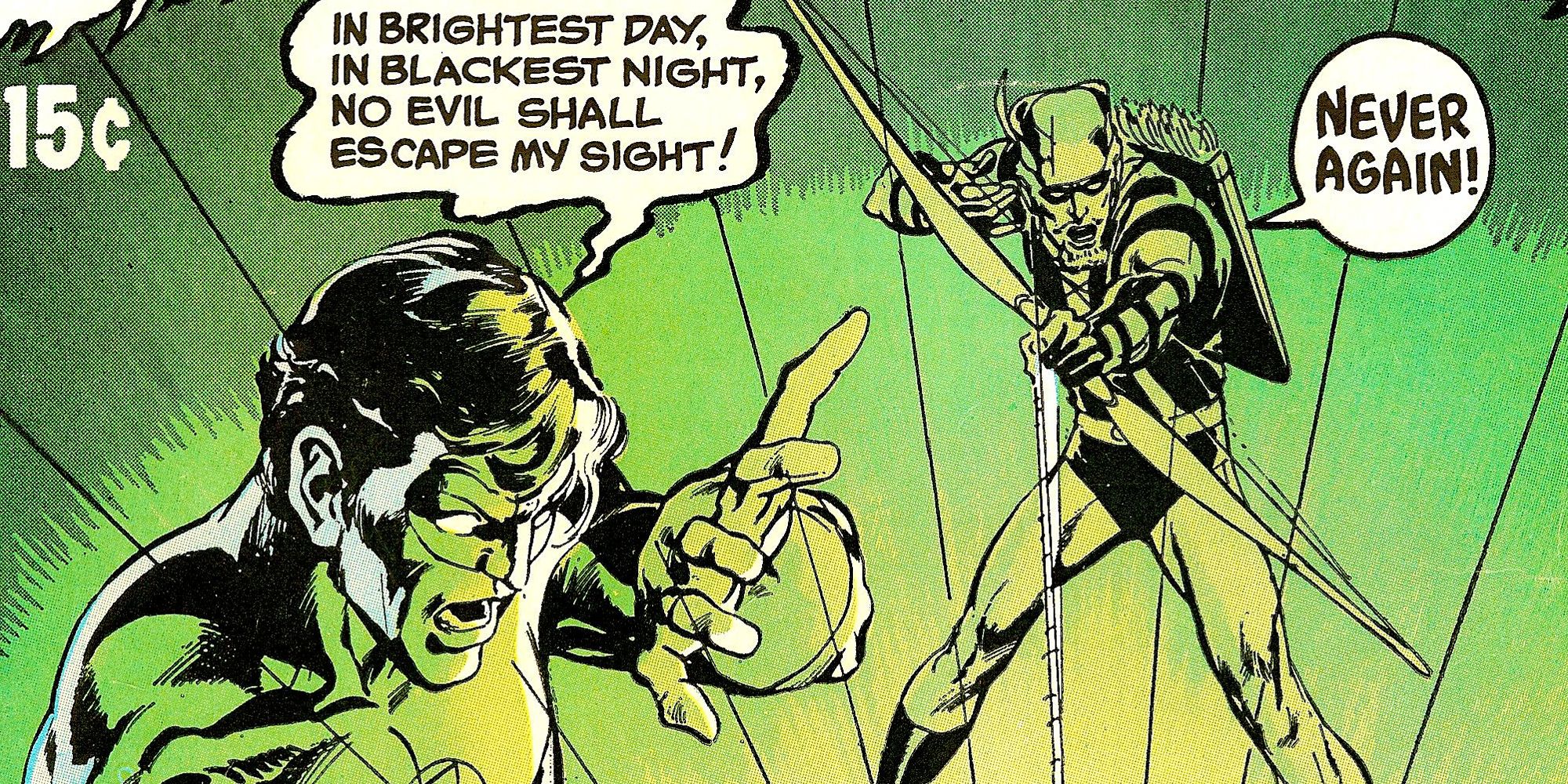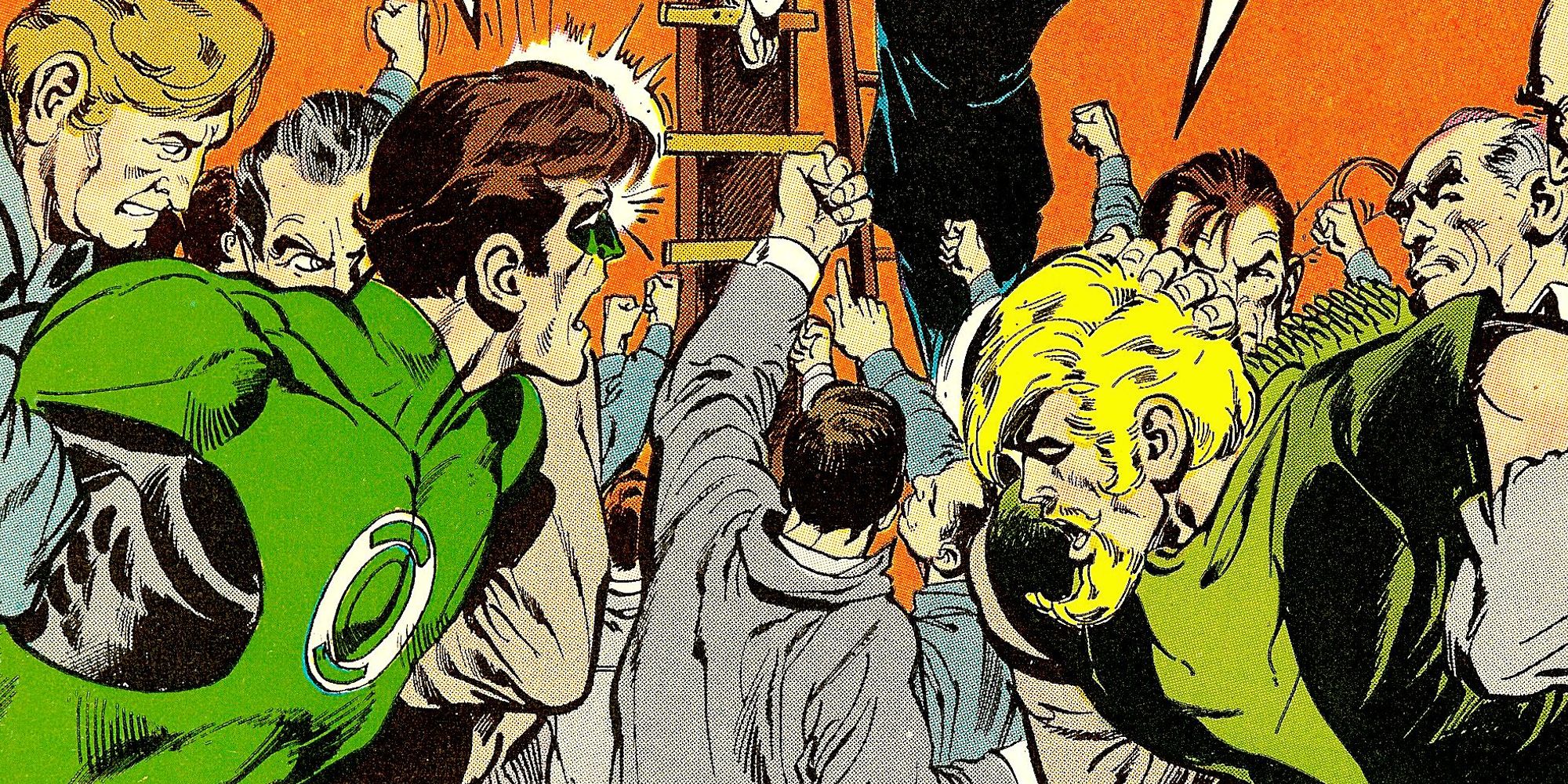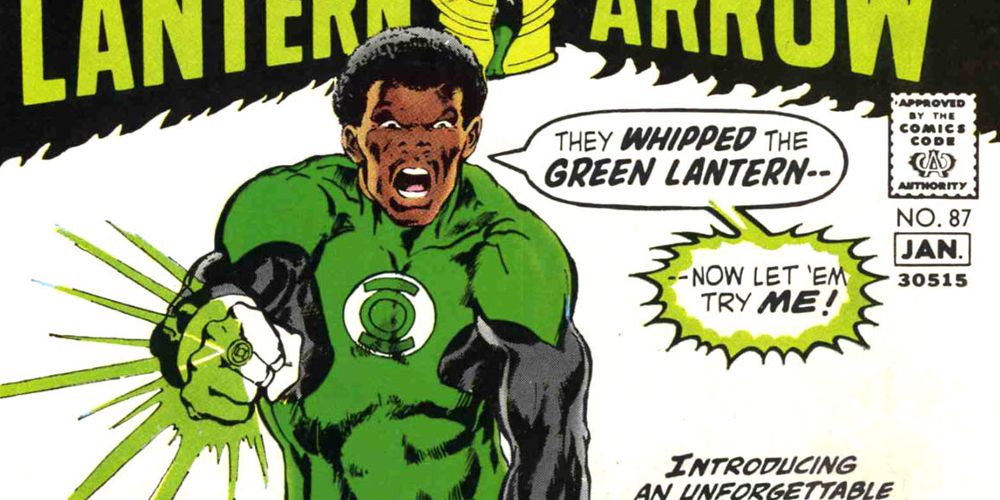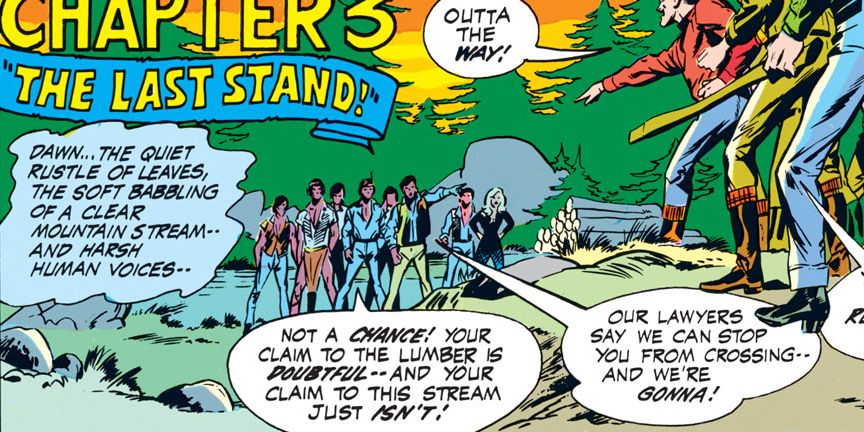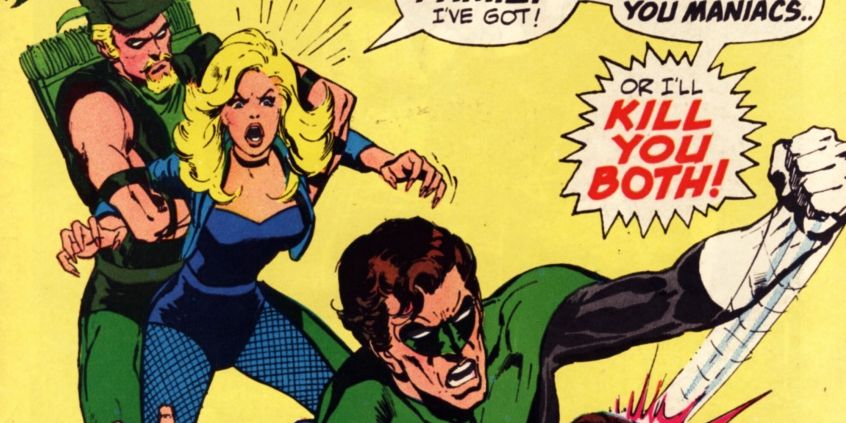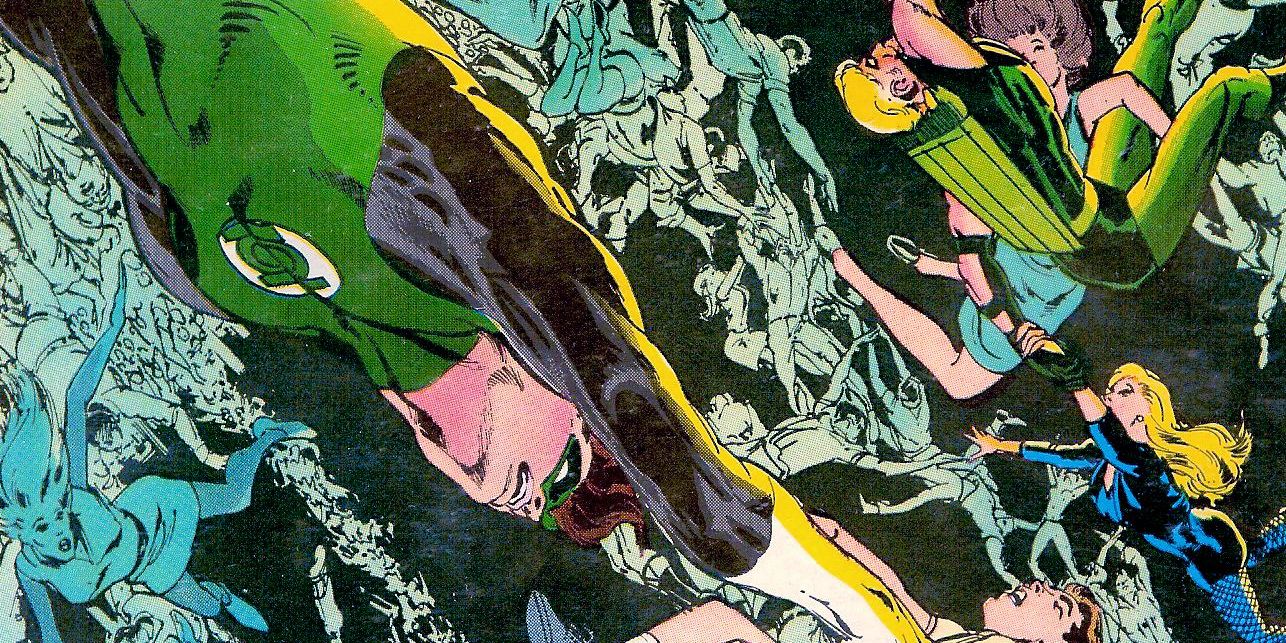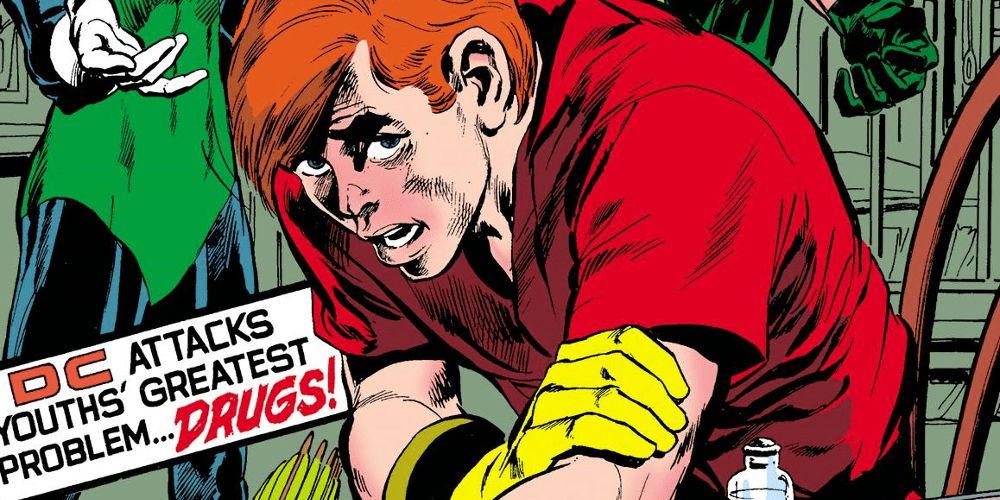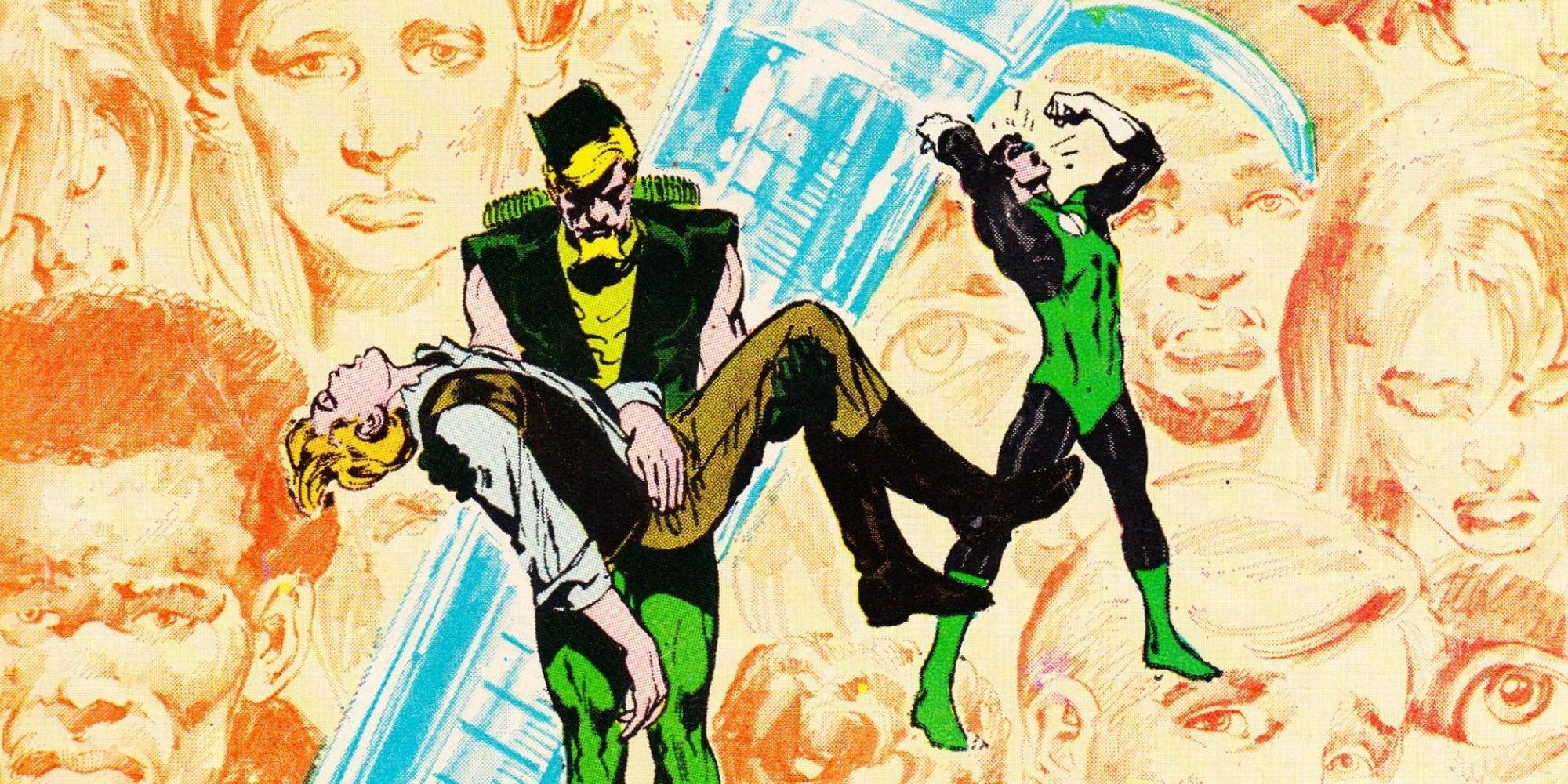"In brightest day, in blackest night!" In the '70s, the 1960s-era DC Comics heroes were striving to become relevant. Marvel was leaving them in the dust, so DC brought in younger people to try and breathe new life into their tired heroes. Robin went to college, Wonder Woman lost her powers, Superman lost his Kryptonite, and Green Lantern and Green Arrow quit their jobs and traveled across the country together with a Guardian from Oa.
While the Silver Age Green Lantern had the universe as his playground, going into the Bronze Age, he would leave space for social awareness and responsibilities.
DC Special #17
This issue of DC Special featured three classic Silver Age Green Lantern stories: "The World of Phantoms," "The Secret of the Golden Thunderbolts," and "The World Within the Power Ring."
These are three Silver Age classics written by John Broome with art by Gil Kane. The Siver Age GL series was canceled with #89 in 1972. DC Special was used as a reprint and tryout book, publishing issues like "Superheroes vs. Super-Gorillas" and two issues devoted to Green Lantern. The first one sold well enough to try a second one, DC Special #20. That issue sold well enough to bring back the actual Green Lantern series with #90.
Green Lantern #90 - Those Who Worship Evil's Might
Green Lantern along with Green Arrow, arguably the best archer in comics, investigate a spacecraft found in the desert when out rushes an alien yelling for help and pursued by several other aliens with rayguns. The alien lures GL off the planet, steals his lantern and leaves him on Jupiter's moon. GL escapes, and he and GA capture the alien.
This is the issue that sees Green Lantern and Green Arrow return after a four-year hiatus. This time, they're not battling for social progress or the environment as they did previously. Instead, Green Lantern is back in space, dealing with alien races and cultures.
Green Lantern #76 - No Evil Shall Escape My Sight
Green Lantern gets an education in slum lords from an angry mob and Green Arrow. The Guardians demand GA leave the slumlord alone, as he's committed no actual crimes, so Arrow takes the slumlord down himself. GL helps gather evidence and arrests the slumlord. A Guardian shows up, angry at GL for disobeying their order. GA tells the Guardian and GL that they know all about space but nothing about America. GL and the Guardian decide to travel in GA's old pickup to learn from him. Thus began one of the strangest friendships in Green Lantern comics.
This issue starts Green Lantern's turn to social consciousness. GL is shamed on the street by an elderly Black man who points out that Lantern helps the universe, but has he done nothing for people of color on his own planet. Writer Denny O'Neil wanted to bring relevancy to the comics, to have his heroes deal with real problems. Both O'Neil and artist Neal Adams would win awards for this issue and several others in their short run.
Green Lantern #89 - ...And Through Him Save A World
Green Lantern and Green Arrow met environmental activist Issac. Issac uses vandalism to fight against polluting industries, one act of which nearly accidentally kills Carol, GL's girlfriend and head of Ferris Aircraft. GL confronts Isaac, but GA helps Issac to escape. Issac chains himself to an airplane engine. There he dies in the name of "progress."
While the religious themes here are as subtle as a brick, the environmental message gets through. But this is the last issue of the famous "socially conscious" Green Lantern run. Although the run won awards, the sales were not there. Still, it's hailed as a milestone even 50 years later.
Green Lantern #87 - Beware My Power
John Stewart, a Black man, is recruited as a fill-in Green Lantern and trained by a reluctant Hal Jordan. Hal isn't sure John is cut out to be a GL, but when John helps depose a corrupt senator, he earns his ring and Hal's respect. Meanwhile, Green Arrow is asked to run for mayor of Star City and witnesses the death of a Black child.
The main story here does a good job exploring issues of racism and the racist ideas held by some people who don't believe themselves to be racist. Some of the same issues are brought up in the GA story, "What Can One Man Do?" This is a character-defining story for Green Arrow as Oliver Queen struggles with the value of being a masked crime fighter.
Green Lantern #79 - Ulysses Star is Still Alive
On a Native American reservation, Green Lantern and Green Arrow take on bankers and loggers trying to steal the land and forests of the Native tribe. The heroes try to find the deeds to the land but are thwarted. Finally, they're able to get the law involved, and the loggers and bankers are arrested.
RELATED: 10 Most Hilarious Green Lantern Memes Of All Time
While the story is problematic in many ways by modern standards, the plight of Native Americans gets the "progressive" GL/GA treatment. GL tries the legal route, searching for deeds to disputed land. Meanwhile, GA adopts the costume of a long-dead tribal chief to battle the loggers trying to steal the land. It ends with a literal fight between both heroes and both paths to justice.
Green Lantern #78 - A Kind of Loving, A Way Of Death
In this story, Black Canary, whom comics fans know would eventually marry Green Arrow, joins a cult. Its leader, Joshua, has hypnotized Canary and his other followers into forming an army he plans to use for violent insurrection. Green Lantern and Green Arrow rescue Canary, but not before GA takes a bullet to the arm. Eventually, Canary comes to her senses.
GA and GL take on a cult whose members call themselves a "family." Its leader doesn't just indoctrinate his followers, but he physically hypnotizes them to do his bidding. Cults were all over the media at the time, beginning with the Manson family in the late '60s, and Joshua in this story was clearly inspired by Charles Manson.
Green Lantern #81 - Death Be My Destiny
In this issue, the Guardian companion of Green Lantern and Green Arrow is stripped of immortality and sent to his homeworld to live. GA, GL, and Black Canary find the planet vastly artificially overpopulated to the point of planet-wide starvation. They find out what happened and work to set things right.
RELATED: 10 Times Black Canary And Green Arrow Were Couple Goals
Overpopulation was a major issue of concern in the '70s, with movies like Soylent Green in the theaters addressing a dystopian future beset by the problem. Similarly, O'Neil and Adams imagine the Guardian homeworld suffering here to the point of desperation due to an overpopulation of clones indistinguishable from the regular population.
Green Lantern #85 - Snowbirds Don't Fly
In tracking down a group of drug dealers, Green Lantern and Green Arrow discover GA's former sidekick, Speedy, in a drug den. Speedy tells them he's there as part of an undercover investigation, but it's revealed at the end of the story that Speedy, aka Roy Harper, is actually a heroin addict.
Previously, Spider-Man tackled drugs in the pages of Marvel comics, but for DC, the more conservative company, this story was an earthquake. The Comics Code Authority threatened to withhold its approval stamp, but when DC said they'd publish it anyway, the CCA relented. The drug use is realistic if dramatized, and while the writing can be a bit preachy, there's no denying this issue was enormously groundbreaking for its time.
Green Lantern #86 - They Say It Will Kill Me... But They Won't Say When
Continuing Speedy's story, Roy tries to explain his drug addiction to GL as GA tracks down the head of the dealers. After the drug kingpin is captured, Speedy shows up at the funeral of a fellow addict, shaky but clean. Speedy slugs GA and marches off to restart his sober life.
At the time, the two-part story this issue concludes was unheard-of in mainstream comics. But the issue treats addiction realistically, with kindness and respect to those who suffer from drug addiction. It showed how obsolete the Comics Code was.

